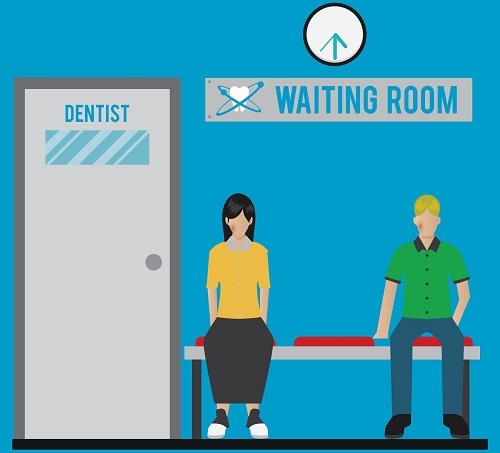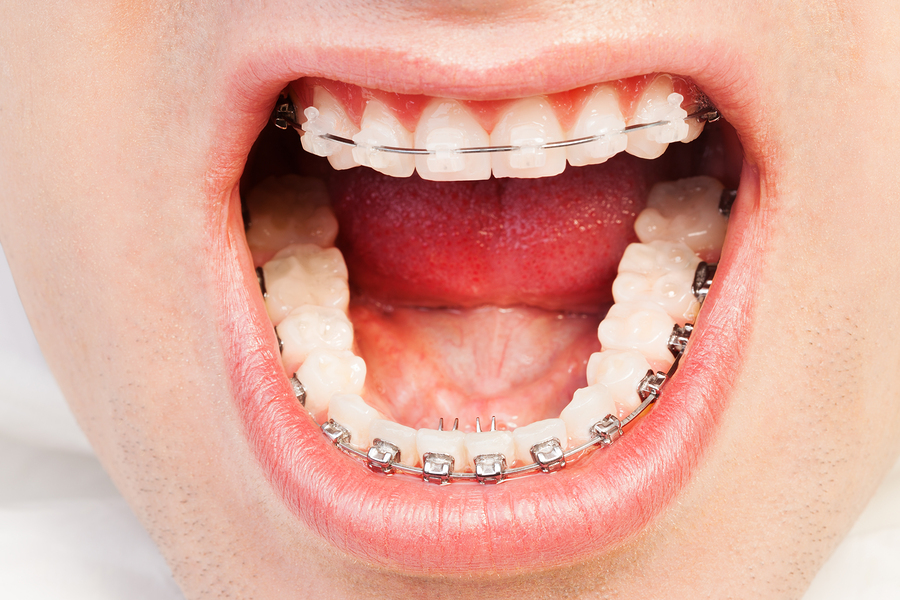Self Ligating Braces: How They Work
Self ligating braces work like traditional braces, except they have no ligatures. This means that they do not have elastic or rubber bands connected to them. Self ligating braces have special types of brackets on them which help the archwires apply pressure to your teeth to shift them into place. Self ligating braces can help minimize irritation and discomfort and are much easier on your teeth.
Self ligating braces have active and passive brackets. Passive brackets have smaller archwires which provide more movement for your teeth, resulting in less discomfort. Passive brackets are usually used at the beginning of treatments by dentists. Active brackets have thicker archwires which put more pressure on your teeth.
Self ligating braces require fewer visits to your dentist or orthodontist and are significantly more comfortable than traditional braces are. This is because self ligating braces have less friction, resulting in less pressure on your teeth. They are available in metal, ceramic or lingual braces.
Although self-ligating braces are smaller and put less pressure on your teeth, they also come further off a person’s teeth, which can cause possible irritation to your lips, cheeks, and gums.
Self-ligating braces use adhesive to attach to your teeth, just like traditional braces. The brackets are not removable, which means that during the course of your treatment you must maintain good oral hygiene to maintain optimal oral health to prevent any gum or tooth issues. It is also recommended that you avoid excessive sugar, hard foods and anything that is highly acidic during the course of your treatment. Your dentist will sit down with you and advise you of the things you should avoid eating or doing after your self-ligating braces are installed.
Self-ligating braces are extremely easy to keep clean. In fact, they are much easier to keep clean than traditional braces because there are no elastic or rubber ties that you need to keep clean. Although self-ligating braces are much easier to keep clean than other forms of braces, you still need to maintain a healthy oral health care routine by brushing and flossing regularly.
What you Need to Know: Advantages of Self-Ligating Braces
Self-ligating braces, also known as Damon braces, have archwires on the braces which are kept in place with a spring-loaded door. Self-ligating braces make your dentist or orthodontist appointments much faster because orthodontists don’t have to spend time placing elastics around each bracket on your braces. This is because elastics on traditional braces need to be placed individually on each bracket in order to hold archwires in place. Because self-ligating braces don’t need this, your appointments will be much quicker.
You will also experience less discomfort using self-ligating braces. This is because, without the use of elastic bands on the archwires, there will be less friction, force, and pressure that will be applied to your teeth to move them into place. This will help reduce discomfort. Although you still may experience some soreness or discomfort, it will not be as bad as traditional braces. This is because traditional metal braces have elastic bands which cause more pressure on your teeth, resulting in discomfort.
Self-ligating braces also generally result in a faster treatment than traditional braces. Of course, it depends on the type of correction being done to your teeth and the severity of your condition.
Generally, self-ligating braces are much faster forms of treatment than traditional braces, which may make it a more ideal option for you or your child. In addition to this, because self-ligating braces do not have elastics on them, food will not become stuck in your braces as often as they would with traditional metal braces. This minimizes and reduces the amount of upkeep on your braces, making it much easier to clean them.
Although it is still extremely important to maintain your regular oral health routine when wearing self-ligating braces, maintaining them will be much easier than it would be for traditional braces.
Self-ligating braces come with the option of metal and clear brackets. If you are worried about how metal brackets may appear on your teeth, you have the option of clear brackets. This is a great option because clear brackets will reduce and eliminate the appearance of braces if you are worried about how metal brackets will affect your smile.
Downsides of Self-Ligating Braces
Although there are many advantages to self-ligating braces, there are also some disadvantages. Self-ligating braces tend to be more expensive than traditional metal braces. If budget is a concern of yours, this is something you should take into consideration before making the decision to use self-ligating braces as your form of treatment.
Although self-ligating braces are not as visible as traditional metal braces (even if you opt for the clear brackets), they are still slightly visible. The metal wire that runs across your teeth will still be visible to the naked eye.
In addition to this, you are still likely to experience some discomfort when your braces are first put in. Although the course of your treatment will be relatively pain and discomfort free, your mouth and teeth will need to adjust to your self-ligating braces when they are first put in. This discomfort can last for a few days when they are put in or adjusted, but will eventually fade away.
“Self-ligating braces have fewer mechanical components, meaning there are fewer nooks and crannies where food, debris, and plaque can accumulate. This not only makes wearing them a more pleasant experience, but makes it much easier to keep them clean.”
Speak to your Dentist Today
Self-ligating braces are thinner than traditional metal braces. This means they will take up less space inside of your mouth. Although you will be in some discomfort when they are first put in, your overall discomfort will be less than with traditional braces. This form of treatment may also be a much faster process than regular traditional braces. If you are worried about how the appearance of traditional metal braces will affect your smile, you may opt for the self-ligating route as they tend to be thinner.

Your dentist will recommend the best option for you. You should also speak to your dentist about other forms of treatment to see which one is the best for you and your smile.
Relate Posts to Read:
What Do Spacers for Teeth Do?
Medically Fact-Checked & Written by Our Dental Editorial Team
You can read more about our editorial guidelines by clicking this link and learn more about the Emergency Dentists USA editorial team here.





